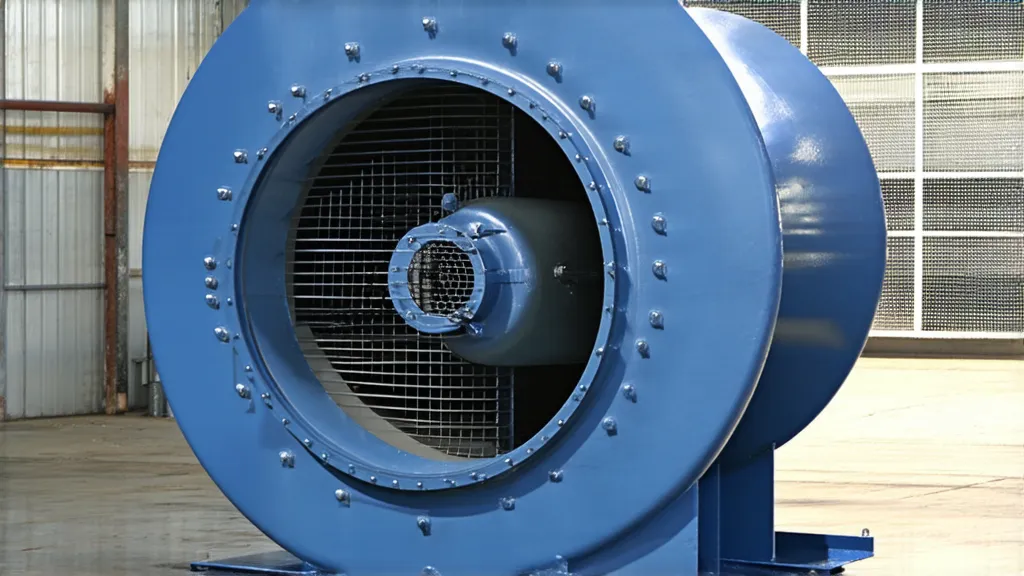What Is the Difference Between Industrial and Normal Fans
Explore the key differences between industrial and regular fans in terms of power, durability, size, and intended use.
Read More
In industrial settings, proper ventilation and air movement are crucial for maintaining a safe and productive work environment. However, many facilities struggle with stagnant air, heat buildup, and poor air quality.
Without effective air circulation, these issues can lead to uncomfortable working conditions, reduced equipment efficiency, and even potential health hazards for employees. Ignoring these problems can result in decreased productivity, costly downtime, and compliance issues.
Centrifugal fans offer a powerful and reliable solution for industrial air movement needs. In this blog post, we’ll dive into how centrifugal fans work, explore their key components, and examine the different types available to help you select the best fan for your specific application.

A centrifugal fan is a mechanical device designed to move air or other gases. Unlike axial fans, which propel air parallel to the shaft axis, centrifugal fans use a rotating impeller to draw air into the center of the fan wheel and accelerate it radially outward by centrifugal force. This directional airflow change from axial to perpendicular is a defining characteristic of centrifugal fans.
Centrifugal fans operate based on the principle of centrifugal force. As the impeller rotates at high speeds within the fan housing, it draws air in through the inlet near the center of the impeller. The air is then accelerated radially outward by the rotating blades.
As the air moves from the center of the impeller to the edge, it gains both velocity and pressure. The centrifugal force generated by the rotating impeller causes the air to move perpendicularly from the shaft, flowing outward in a spiral pattern.
The fan housing plays a crucial role in directing the airflow. It collects the air as it exits the impeller at high velocity and guides it to the outlet. The housing’s scroll-shaped design helps convert the kinetic energy of the fast-moving air into pressure, making centrifugal fans capable of generating high pressures.
Forward-curved fans have blades that curve in the direction of rotation. They are characterized by their compact size, high airflow capacity, and low noise levels. However, they have a steep pressure curve and are prone to overloading at high static pressures. Forward-curved fans are commonly used in HVAC applications, air conditioning units, and clean room ventilation.
Backward-inclined fans have blades that slope away from the direction of rotation. They offer higher efficiencies and are capable of handling higher static pressures compared to forward-curved fans. Backward-inclined fans have a flatter pressure curve, making them less susceptible to overloading. They are well-suited for industrial applications, such as material handling, exhaust systems, and process ventilation.
Radial fans, also known as straight-blade fans, have blades that extend straight out from the hub. They are simple in construction and provide moderate airflow and pressure capabilities. Radial fans are robust and can handle high temperatures and contaminated airstreams. They are often used in industrial processes, such as drying, conveying, and dust collection.
Airfoil fans feature blades with an aerodynamic cross-section, similar to an aircraft wing. They offer the highest efficiencies among centrifugal fan types and provide a combination of high airflow and high static pressure. Airfoil fans operate quietly and are well-suited for applications that require energy efficiency and precise airflow control, such as clean rooms, hospitals, and laboratories.